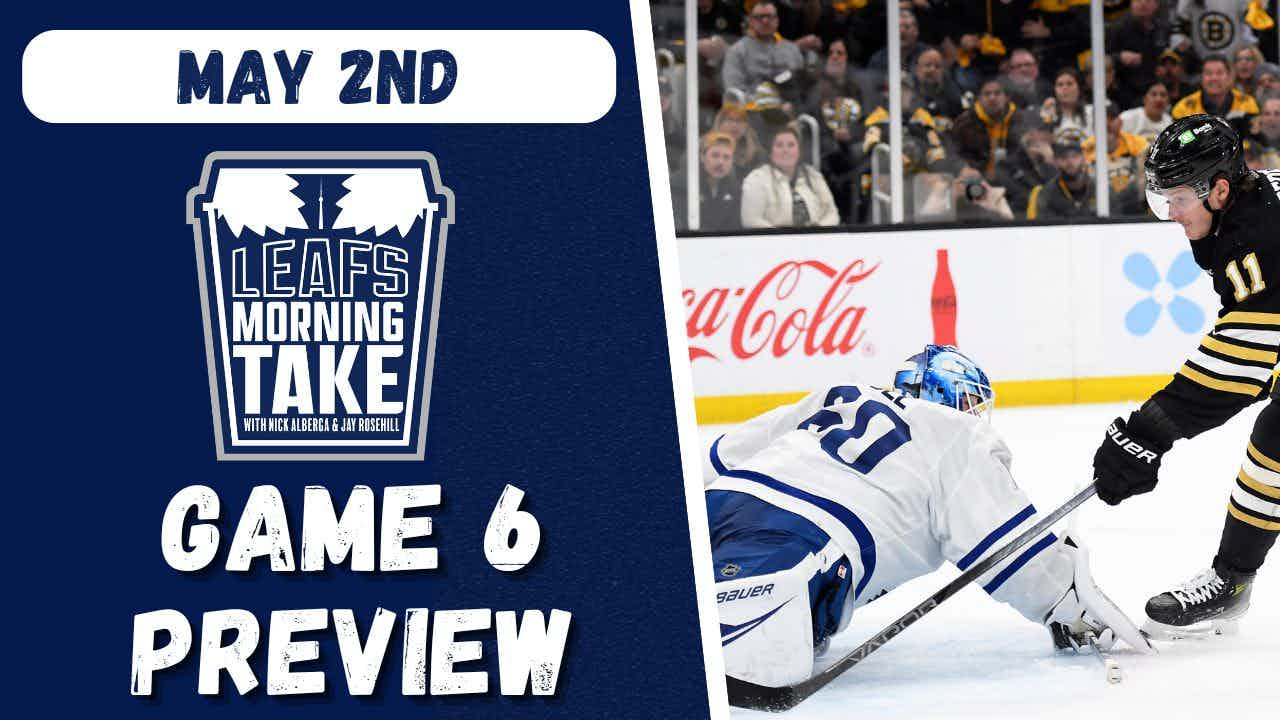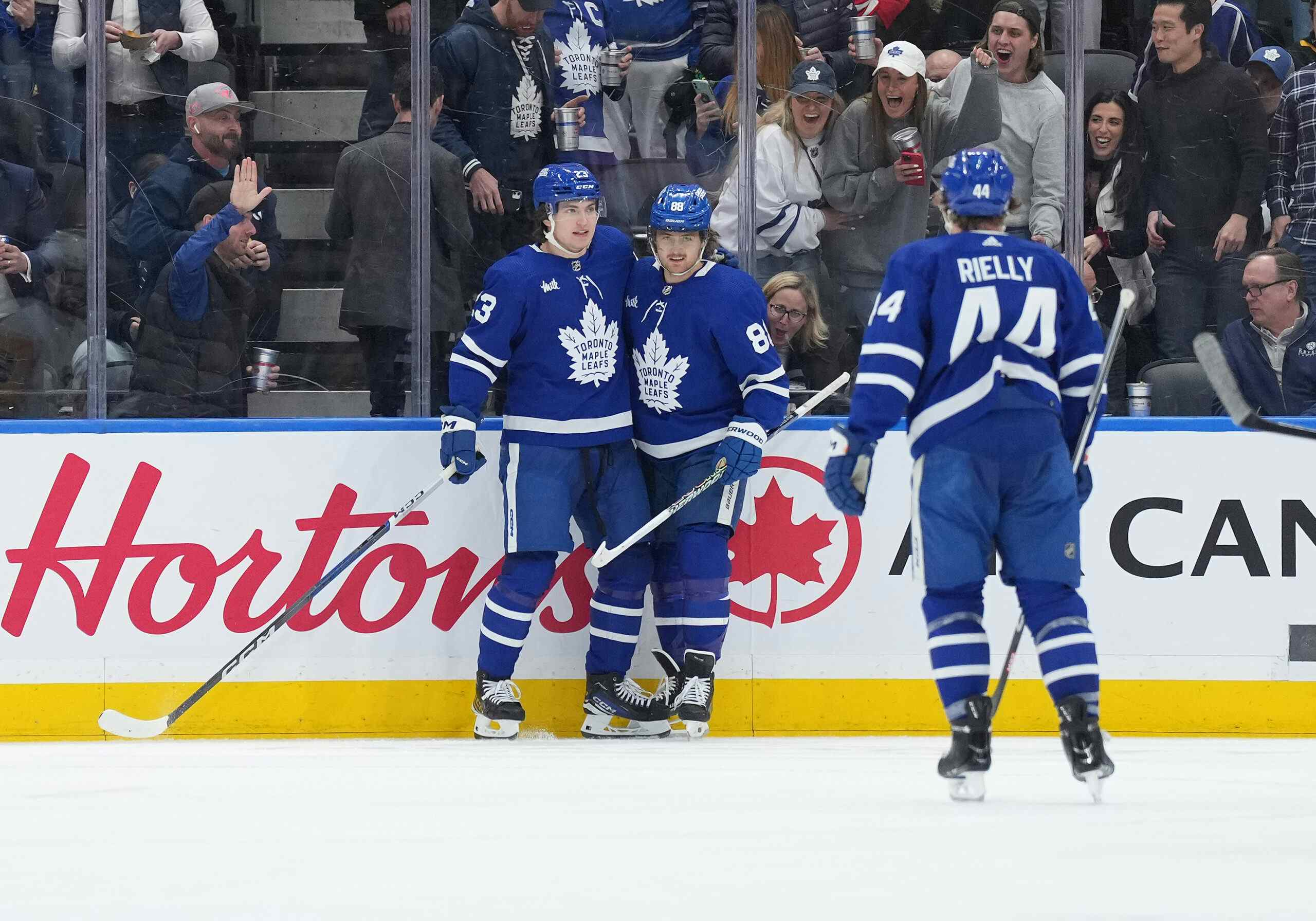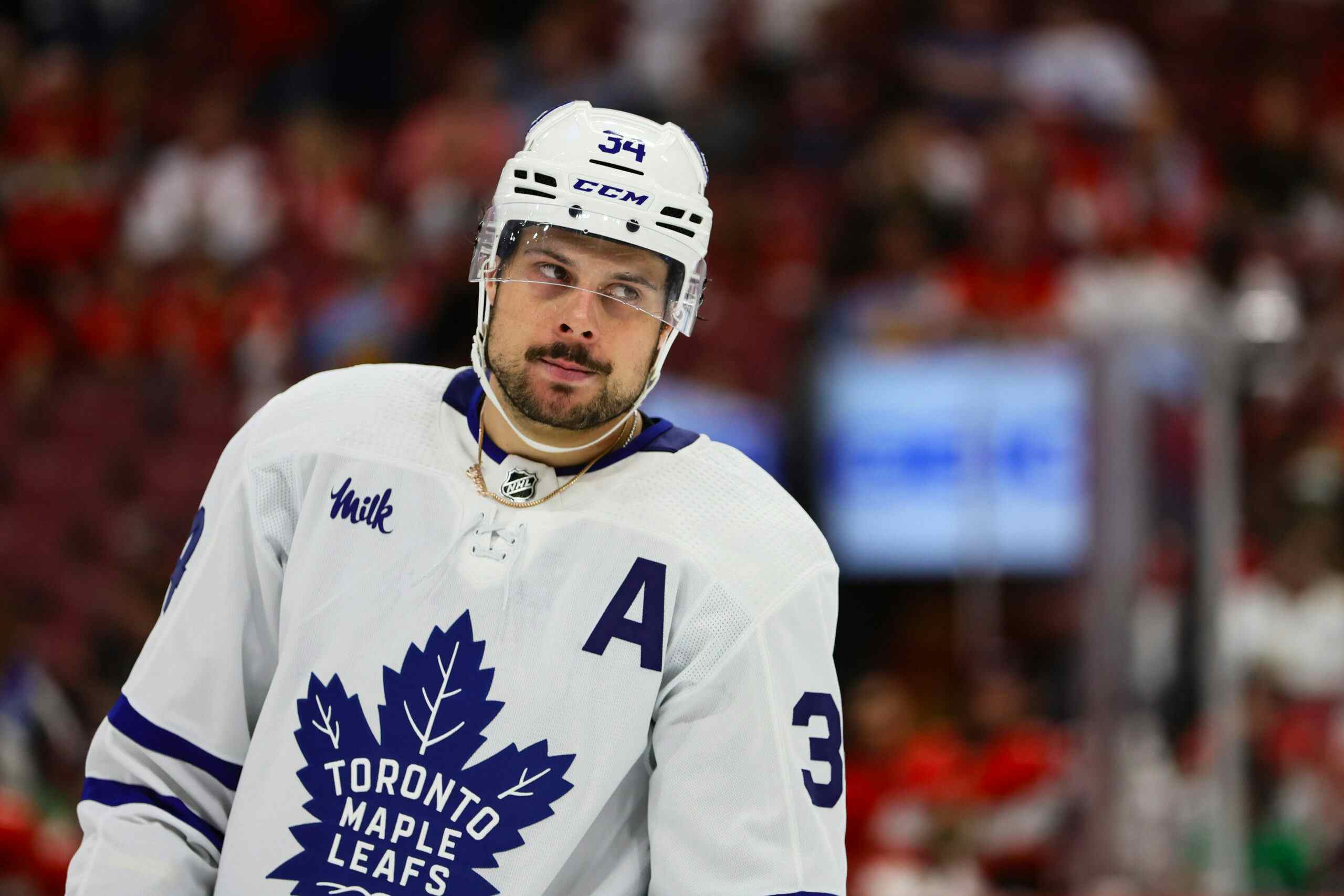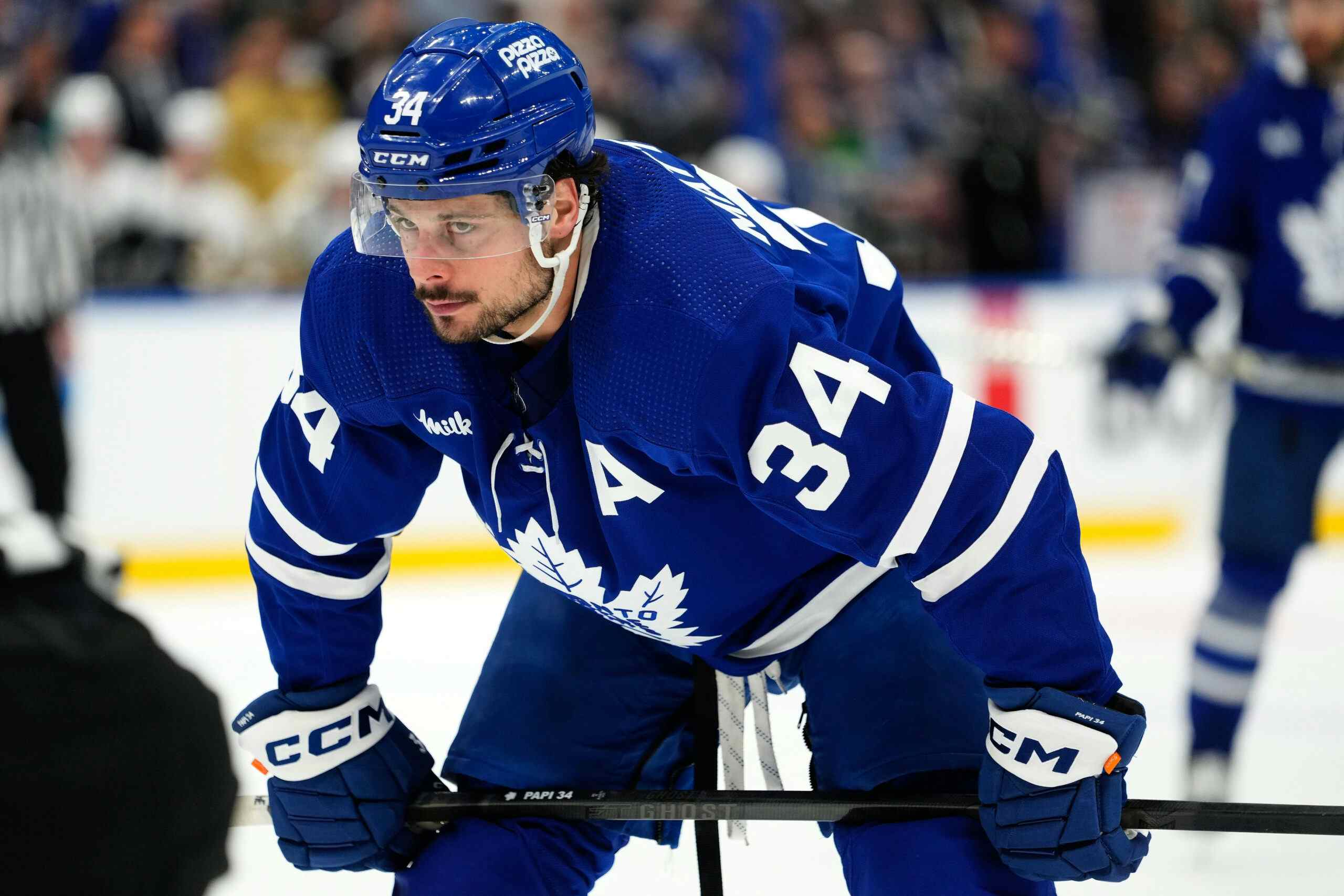What We Learned From The World Championships
It was a fun couple of weeks, but finally, everybody’s favourite step-tournament is over and done with. The 2016 World Championships are over, the Canadian’s have gold medals on their chests and somebody in Russia is making anti-American videos to distract from the host team’s early exit. Or something.
Oh, and the Leafs had their hands all over this tournament. In that regard, it was a lot of fun. But what did all of them do?
Let’s start with Morgan Rielly. After all, he was the one who got to celebrate on the last day with a Gold Medal on his chest with his dad watching from the stands; an awesome accomplishment for a 22-year-old, no doubt. But he was also one of Canada’s most relied upon defencemen over the course of the tournament. His three points in 10 games wasn’t the most impressive looking performance on earth from the perspective of the stat sheet, but his sole purpose wasn’t to score.
Rielly was paired with Chris Tanev in was a bit of a fantasy pairing. The offensively inclined rusher on the left, the shot suppressor on the right. Rielly is a Leafs player from Vancouver; Tanev is a Canucks player from Toronto. One shoots left on the left, one shoots right on the right. A yin/yang duo. They played quite well too; both landing in the 62-64% Corsi For territory. Technically, neither of those were overly impressive team-relative numbers, but the two were also placed against the toughest opponents in the toughest situations. It makes you wonder what Rielly could do in the NHL with a partner like that.
If Tanev isn’t an option, though, there’s always Nikita Zaitsev. I’ve been saying since the watch began that Rielly would be Zaitsev’s ideal partner and that he’s ready for big-time hockey. This tournament may have added some fuel to that fire; Zaitsev was second among Russian defencemen with a 67.8 CF%, trailing only Alexey Marchenko of the Detroit Red Wings. He also picked up a goal and three assists and was a +12; not to mention, a Bronze Medallist.
For his efforts, Zaitsev was named to the tournament’s All-Star team, alongside Canadian and Florida Panthers prospect Michael Matheson.
We also got to watch two players that are a month away from finding out whether or not they’re about to instantly become the Leafs’ top prospect. Honestly, in that regard, this tournament would have been a great time to evacuate the internet and enjoy your life. The conversations weren’t fun.
With every game, those who were in favour of Auston Matthews and those who preferred Patrik Laine let the debates get more and more hyperbolic. By the end of it, Matthews was either Jonathan Toews with Gretzky’s offensive instinct or Matt Stajan. Laine was either Alex Ovechkin with Lemieux’s reach or Nikita Filatov. None of those are valid descriptions for either player.
Laine’s numbers were historically good, smashing all expectations for a teenager at a men’s tournament. He put up point after point after point (12 in 10 games, leading the tournament), before fading away a little as the calendar got longer and the teams got tougher. He was held off the scoresheet in the Gold Medal Game, but so were all of his teammates.
What I saw in Laine was a player with a fantastic release that could feast on good, but not great talent. Many of his points were created in plays where he was left alone in typically predictable spots for baffling reasons. Once the quality NHL opponents on the ice equalled or surpassed the teammates supporting him (so, not France), he struggled to develop clear lanes for shots and passes and didn’t have the same luck with foot races as he did prior. His possession numbers weren’t amazing either; despite being used in scoring situations, Laine’s 57% Corsi-For, while great at face value, was below the curve on a relative scale and only Mikael Granlund and Mikko Rantanen fared worse of expected 2016/17 Finnish NHLers.
But you know what? That’s fine. He’s 17 years old and put up a performance that anybody else would be thrilled with. It wasn’t the second coming that the numbers reflected, but he showed that he can play at a young age with the right support. Winnipeg are getting a special winger that will fit in fantastically to their young core.
I did get a sense of confirmation, however, that Matthews is the player at to pick first overall.
The Americans, if we can be honest with ourselves, were an awful team this year. The only players on this team who have any business of playing in the World Cup of Hockey in the summer/fall aren’t old enough to be eligible for the main team, instead having to opt for Team North America. Half the roster requires a look on HockeyDB. Matt Hendricks being the captain of a National Team is baffling.
Auston Matthews spent the bulk of the tournament with Frank Vatrano, who made the team based on an AHL scoring streak in the Winter, and Jordan Schroeder, who I will only remember is an active player still because he was on Matthews’ wing. This team should have been nowhere close to the medal round.
But they got there, putting up a decent fight all the way up until they ran into the Russians in that last game. Like Laine, Matthews led his team in scoring with 6 goals and 3 assists in 10 games. He did so with much weaker linemates (Laine played with Alex Barkov and Jussi Jokinen, NHL linemates who combined for 120 points this year), playing in just as many defensive situations as offensive ones. What you saw was a player who was as positionally sound behind his red line than he was in front of it, one who was instrumental in closing off scoring opportunities, leading the Americans back into the zone with control, getting into positions to give his teammates more options, and, occasionally, firing the black rubber into open mesh. Even with the extra responsibility, he was right relatively neutral from a possession perspective, putting up 55% CF on a 55.5% team.
Ten games shouldn’t decide a draft class. But Matthews has been the guy for years and seeing him be one of the best players in the tournament on both sides of the ice on a team with a big brand name but an underdog roster was about as good as it gets.
Leo Komarov gets enough on this shot to squeak it through. Part of a 4-0 win for @leijonat to stay undefeated. pic.twitter.com/nC3RNGmtmW— IIHF (@IIHFHockey) May 17, 2016
All this prospect talk, and we’ve almost forgotten about two other Leafs! Leo Komarov played with Laine on Team Finland, albeit in a support role. As I stressed above, the Finns were a very good team this year, and could have just as easily come out with the Gold yesterday if some of those pucks went in their favour.
Komarov still managed to get himself on the scoresheet a few times, though, scoring three goals and four helpers in ten games. Uncle Leo was just as much of a utility player in this tournament as he is on the Leafs. In some games, he was lined up Liiga and KHL regulars that nobody in North America would recognize. In others, he’d end up with Granlund and Mikko Koivu. In hindsight, Leo’s return to Dynamo Moscow in 2013/14 was his best ever career decision; he made both the Finns and the Leafs realize what he could bring to their lineup if allowed to be versatile.
His underlying numbers were decent as well, though nothing to phone home about. His 57.8% CF was slightly below Finland’s 58.5% without him.
Martin Marincin was kicking about too. He played on a line with Edmonton’s Martin Sekera and was named one of Slovakia’s MVPs of the tournament. His 50.9% CF was 1.5% better than the team when he was off the ice, though they would have probably preferred him to pick up more than two assists. As well, winning a few more games would have been nice. Some things never change for Marincin, do they?
Overall, the World Championships are a tournament that you have to invest yourself into truly get the most out of. We all know they’re not quite the best-on-best of the Olympics, but they’re a fun way to see how some of your favourite players would fare with other opponents, and against players who don’t typically get NHL exposure. Having four Leafs and two potential future Leafs in the lineup of five countries was certainly a good way to get some enjoyment out of the event. In future years, though, the Leafs will probably be hoping to be too far into the Stanley Cup Playoffs to care.
Recent articles from Jeff Veillette





